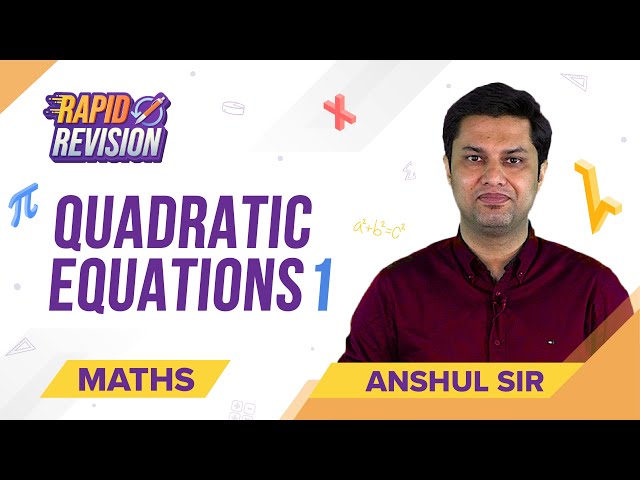Quadratic Equations Class 11 Notes are available here for students. The notes are very helpful to have a quick revision before exams. Class 11 Maths Chapter 5 quadratic equations include a quadratic formula to find the solution of the given equation.
Consider the quadratic equation:
The solution of above quadratic equation will be in the form of complex numbers given by:
\(\begin{array}{l}x=\frac{-b\pm \sqrt{b^{2}-4ac}}{2a}=\frac{-b\pm i\sqrt{4ac-b^{2}}}{2a}\end{array} \) |
Important Notes:
- A polynomial equation has at least one root
- A polynomial equation of degree n has n roots
- The values of a variable, that satisfy the given equation are called roots of a quadratic equation
- The solution to quadratic equations can also be calculated using the factorisation method
- If α and β are the roots of a quadratic equation, then the equation is x2 – (α + β) x + αβ = 0
- The nature of roots depends on the discriminant (D) of the quadratic equation
- If D > 0, roots are real and distinct (unequal)
- If D = 0, roots are real and equal (coincident)
- If D < 0, roots are imaginary and unequal
Find solved questions based on quadratic equations using formula.
Video Lesson
Class 11 Quadratic Equations

Quadratic Equations Class 11 Examples
1. Find the roots of equation
Solution: Give,
i.e.
2. Solve
Solution: Given
Therefore, discriminant D =
Therefore, the solution of given quadratic equation =
3. Solve
Solution: Given
Therefore, discriminant D =
Therefore, the solution of given quadratic equation =


Comments